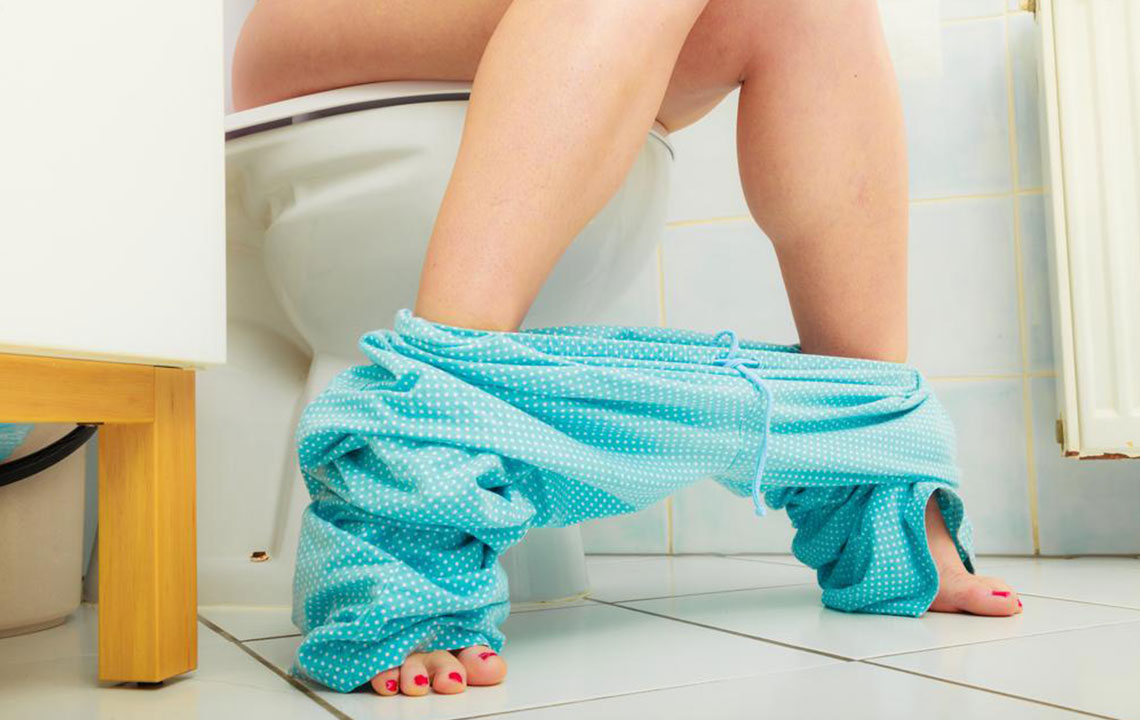Constipation – Causes and Risk Factors Associated With It

Constipation is a bowel condition due to which the bowel movements of an individual are hard and occur less often than normal. Almost everyone experiences this condition. It is not usually serious, as the person suffering from constipation feels much better when the body is back on track.
The normal time frame of constipation varies greatly from person to person. Some people might have it three times a day some only once or twice a week.
Constipation that takes longer than 3 or more days is usually considered as too long a time frame. After three days, the stool or feces become harder and becomes more difficult to pass.
The general symptoms of constipation include:
- Trouble having bowel movements
- Having few bowel movements
- Swollen or dry belly pain with the feeling of nausea
- Hard or small stools
Causes of constipation can be due to several reasons. Poor diet or poor bowel habits are the two main causes of constipation. Constipation causes problems in eliminating of stool, whether it is physical, functional, or voluntary.
Most common causes of constipation include
- Poor diet
Constipation can be caused due to eating only those foods that are rich in animal fats (which are usually found in dairy products, meat, and eggs) and refined sugar. Having a low fiber diet can also result in constipation. This is because the fiber content in the food helps in better digestion and maintains stool consistency that is easy to pass. - Insufficient fluid intake
Lack of fluid in the daily diet can lead to hard and dry stools. Fluid is absorbed by the intestine, consuming enough fluid maintains the water content and keeps the stool soft enough for passage. - Caffeine and alcohol
Consuming beverages rich in caffeine and alcohol result in increased excretion. This results in relative dehydration. This, in turn, leads to constipation as enough water is not retained by the stool. - Blockages in the rectum
Blockages in the intestine may slow down or completely stop the stool movement, leading to constipation. The causes might include anal fissure, bowel obstruction, colon cancer, bowel stricture or narrowing of the colon, abdominal cancer that passes to the colon, and rectum bulge through the back vaginal wall, which is usually referred to as rectocele. - Causes due to nervous problems around the colon and rectum
Neurological problems affect the nerves. These nerves cause muscles in the colon and rectum to contract and move through the intestines. Causes of constipation due to neurological problems include autonomic neuropathy, multiple sclerosis, Parkinson’s disease, spinal cord injury, and strokes. - Difficulty in muscle movement
Difficulty in muscle movement around the pelvic area can result in having problems bowel movement, which eventually may cause chronic constipation. This could be due to inability to relax the pelvic muscles that allow proper bowel movement (usually referred to as anismus. It can also be caused as a result of dyssynergia. This is the condition in which the pelvic muscles don’t coordinate in contraction and relaxation properly. Weakened pelvic muscles also cause constipation. - Causes due to hormonal imbalance
Hormonal imbalance is also one of the causes of constipation. Hormones are also one of the factors that help in balancing bodily fluids. There are a couple of diseases and conditions that upset the hormonal balance and lead to constipation eventually. Some of those conditions include diabetes, hyperparathyroidism or overactive parathyroid gland, underactive thyroid (hypothyroidism), and pregnancy.
Risk factors and complications due to constipation
Factors that increase the risk of constipation include being dehydrated, having a low fiber diet, or getting little or physical activity at all. Consuming certain medications that involve sedatives, narcotics, anti- depressants, or medications to decrease blood pressure can lead to constipation. Mental health condition such as depression or an eating disorder also leads to constipation.
If these conditions lead to chronic constipation, then complications due to it may include the following:
- Torn skin near the anal region; medically referred to as anal fissure, it is caused due to large, dry, and a hard stool that causes tiny tears in the anal region.
- Irregular bowel movements or straining to have a bowel movement may cause swelling in the veins in and around the anal area. The condition of swollen veins in the anal area is known as hemorrhoids.
- Constipation can lead to rectal prolapse. This is the condition in which the intestine protrudes from the anus. It is caused due to a difficulty in having bowel movements that cause a small amount of rectum to stretch and protrude out of the anus.
- Chronic constipation may lead to accumulation of hardened stool that gets stuck in the intestines. This stuck stool cannot be expelled. The condition is referred to as fecal impaction.
Thus, eating a well-balanced diet with plenty of fiber can keep constipation at bay. Drinking plenty of fluids a day and avoiding caffeine helps in avoiding dehydration and eventually constipation. Some people may find milk as one of the major factors of feeling constipated.


